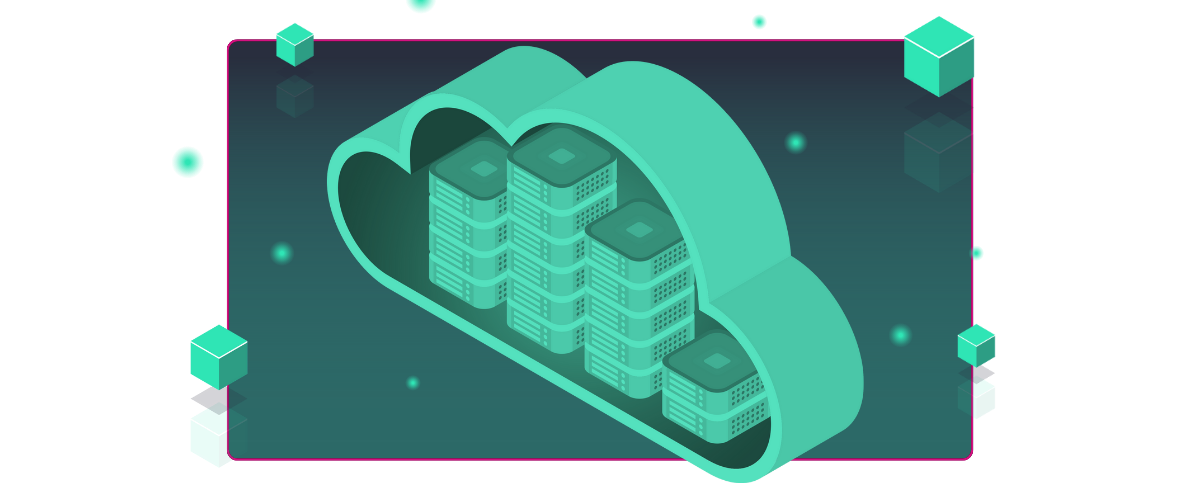Cloud infrastructure has become a cornerstone for modern businesses, It enables organizations to scale operations, optimize costs, and improve agility. We’re seeing increased budgets increasing across both private and public cloud infrastructure, reflecting their growing importance. Businesses that adopt these advancements are better positioned to remain competitive and push innovation.
Several trends are redefining the cloud infrastructure, like a shift toward allowing developers to focus on code without worrying about underlying servers. Multi-cloud strategies are also becoming mainstream as companies seek to avoid dependency on a single cloud vendor. Meanwhile, edge computing is bringing data processing closer to where it is generated, enhancing speed and efficiency.
Another crucial trend to watch is the integration of AI and machine learning into cloud infrastructures. These technologies enable advanced data analytics and automation, opening new levels of business intelligence. Improved security measures are also critical, safeguarding sensitive data against growing cyber threats. Assume these trends to ensure your organization stay ahead of the competition.
So, let’s explain the trends in more details.
Trend 1: AI and Machine Learning Integration
AI and Machine Learning (ML) are significantly reshaping cloud infrastructure. These technologies are being integrated into cloud services to improve decision-making, automate processes, and improve scalability.
Examples of AI and ML Integrations
- Predictive maintenance: Identifies potential issues in cloud infrastructure before they become critical.
- Automated resource provisioning and scaling: Adjusts resources based on demand, ensuring efficient use.
- Anomaly detection and security threat identification: Monitors systems for unusual activities, enhancing security.
- Natural language processing: Powers cloud-based chatbots and virtual assistants to improve customer interactions.
- Personalized recommendations and content optimization: Tailors cloud-based applications to individual user preferences.
- Intelligent data analytics: Facilitates pattern recognition in business intelligence applications.
- Image and video recognition: Enhances cloud-based media processing for better user experiences.
Growth Drivers
Businesses are investing heavily in AI and ML for cloud platforms. The increasing need for intelligent data analysis and automation is driving this investment. Furthermore, Investment trends highlight this growing emphasis. A significant portion of IT budgets in 2024 are allocated to AI and ML technologies and the cloud. This increase reflects the priority businesses place on these innovations.
Impact on Businesses
Cloud platforms enable more effective data analysis by integrating AI and ML. This allows you to predict resource requirements and resolve issues proactively. Such integration leads to greater automation, cost efficiency, and scalability, fostering growth and innovation.
Cloud providers are also developing advanced features like automatic scaling and self-healing systems through AI and ML technologies, further enhancing cloud services. This trend is set to reshape the cloud landscape, offering advanced, efficient, and intelligent solutions for modern businesses.
Trend 2: Multi-Cloud Strategies
Multi-cloud strategies involve using services from multiple cloud providers to meet your IT and business needs. This approach is becoming more popular as businesses seek greater flexibility and resilience.
One of the primary drivers of multi-cloud adoption is the need for flexibility. You can avoid the limitations of tying to one vendor by leveraging multiple cloud platforms.
Another significant factor is risk management. Spreading workloads across different cloud environments helps mitigate the risk of downtime or service outages, ensuring stable operations.
Avoiding vendor lock-in is also a major benefit. A multi-cloud strategy lets you choose the best services from various providers, giving you more control and bargaining power.
Benefits of Multi-Cloud Adoption
- Enhanced Flexibility: You can pick and choose services tailored to specific needs.
- Improved Resilience: Distributing workloads reduces the impact of potential outages.
- Cost Optimization: Competitive pricing and avoiding long-term commitments can save costs.
Challenges to Consider
- Complexity: Managing multiple cloud environments requires advanced skills and sophisticated tools.
- Integration Issues: Ensuring seamless communication between different cloud services can be challenging.
- Security Concerns: You need robust security measures to protect data across various platforms.
Understanding these benefits and challenges can help you make informed decisions about incorporating multi-cloud strategies into your infrastructure. Embracing this trend may enhance your operational flexibility and resilience, positioning your business for future success.
Trend 3: Edge Computing
Edge computing involves processing data closer to where it’s generated rather than in a centralized data centre. This approach reduces latency and bandwidth usage.
Edge computing has grown due to the proliferation of IoT devices. As more smart devices connect to the Internet, the need for local data processing increases.
Businesses face increased demand for low-latency applications. Real-time data processing at the edge meets this demand efficiently.
According to a report, spending on edge technology will continue soaring in the coming years.
Key Benefits of Edge Computing:
- Reduced Latency: Processing data near the source minimizes delays, which is crucial for applications like autonomous vehicles.
- Improved bandwidth efficiency: Local data handling reduces the amount of data sent to centralized servers.
- Enhanced Security: Sensitive data can be processed locally, decreasing the risk of exposure during transmission.
- Scalability: Easy to deploy in remote areas without extensive infrastructure.
Edge computing enables better performance for latency-sensitive applications and significantly enhances overall system efficiency and responsiveness.
Edge computing’s growth will reshape how you design and manage IT infrastructure.
Trend 4: Enhanced Security Measures
Security in cloud infrastructure is crucial. As more businesses migrate to the cloud, the threat landscape evolves, necessitating robust security measures.
Key Drivers:
- Rising cyber threats
- Stricter regulatory requirements
Cybersecurity threats such as ransomware and data breaches continue to increase.According to 2023 Thales Cloud Security Study (39%) of businesses have experienced a data breach in their cloud environment last year,
To combat these threats, you need to invest in cutting-edge security solutions. Many organizations are now adopting zero-trust architectures and passwordless authentication to enhance their security posture.
Business Impact:
- Data Protection: Enhanced measures protect sensitive data from breaches.
- Compliance: Meeting regulatory requirements helps avoid fines and reputational damage.
Employing these enhanced security measures ensures your business can safely leverage cloud infrastructure while staying compliant with industry regulations. By staying ahead of evolving cyber threats, you can keep your data secure and maintain trust with your clients.
Conclusion
Currently, several trends are emerging that you should closely monitor.
Multi-cloud strategies continue to gain traction. Using multiple cloud providers allows you to optimize costs, increase reliability, and avoid vendor lock-in.
Edge computing is becoming essential. Processing data closer to the source reduces latency and increases responsiveness, which is crucial for real-time applications.
AI and machine learning integration are transforming cloud services. These technologies automate tasks, enhance decision-making, and provide predictive insights to streamline operations.
Enhanced security measures remain a priority. Investing in advanced cybersecurity is vital to protecting data and maintaining trust.
To stay competitive and innovative, adopting these trends isn’t just an option — it’s a necessity.
Utilize Qubinets to build a more robust and efficient cloud infrastructure faster than usual. You ensure your business remains at the forefront of technology by leveraging the latest trends.





